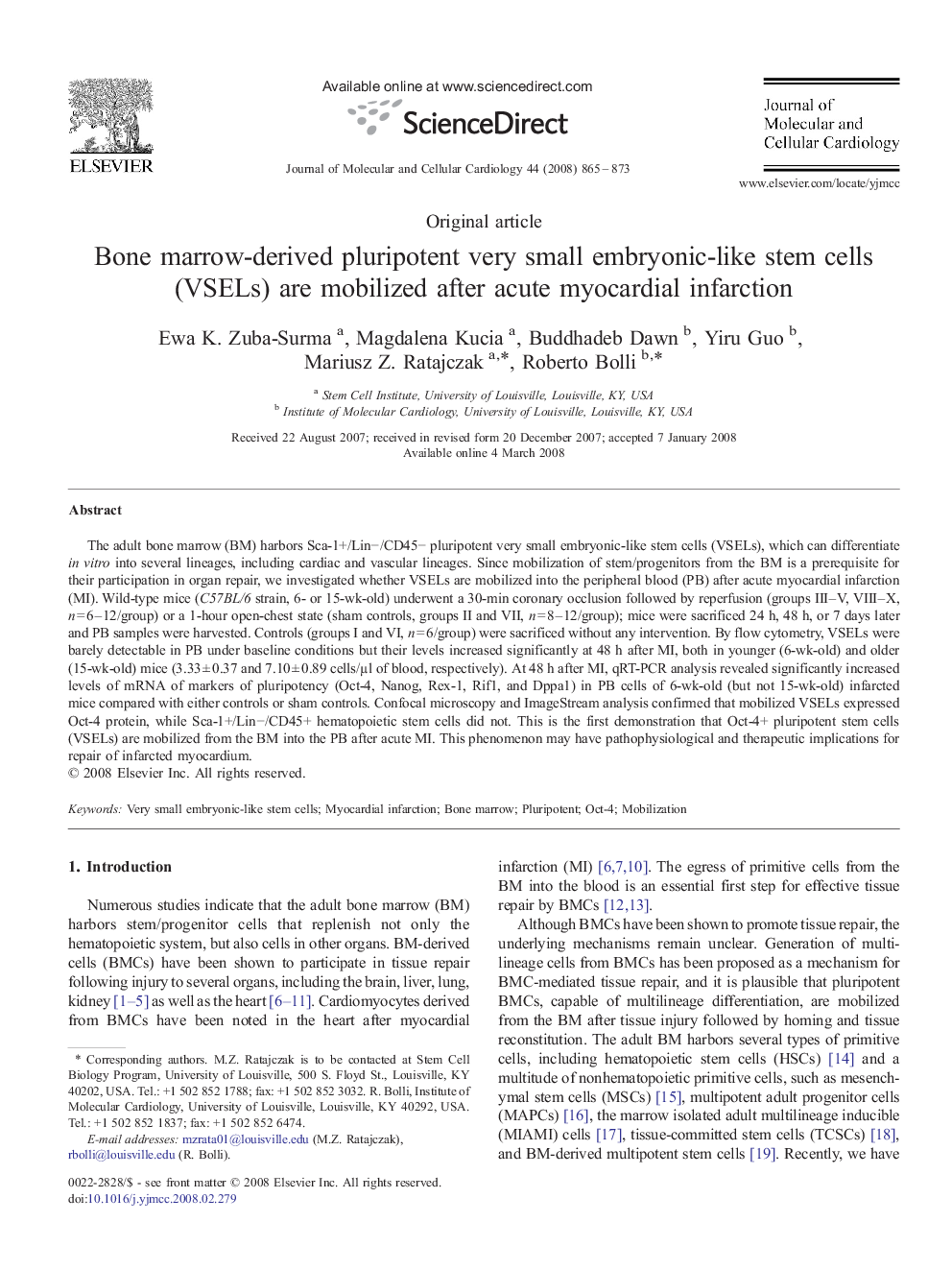| Article ID | Journal | Published Year | Pages | File Type |
|---|---|---|---|---|
| 2191408 | Journal of Molecular and Cellular Cardiology | 2008 | 9 Pages |
The adult bone marrow (BM) harbors Sca-1+/Lin−/CD45− pluripotent very small embryonic-like stem cells (VSELs), which can differentiate in vitro into several lineages, including cardiac and vascular lineages. Since mobilization of stem/progenitors from the BM is a prerequisite for their participation in organ repair, we investigated whether VSELs are mobilized into the peripheral blood (PB) after acute myocardial infarction (MI). Wild-type mice (C57BL/6 strain, 6- or 15-wk-old) underwent a 30-min coronary occlusion followed by reperfusion (groups III–V, VIII–X, n = 6–12/group) or a 1-hour open-chest state (sham controls, groups II and VII, n = 8–12/group); mice were sacrificed 24 h, 48 h, or 7 days later and PB samples were harvested. Controls (groups I and VI, n = 6/group) were sacrificed without any intervention. By flow cytometry, VSELs were barely detectable in PB under baseline conditions but their levels increased significantly at 48 h after MI, both in younger (6-wk-old) and older (15-wk-old) mice (3.33 ± 0.37 and 7.10 ± 0.89 cells/µl of blood, respectively). At 48 h after MI, qRT-PCR analysis revealed significantly increased levels of mRNA of markers of pluripotency (Oct-4, Nanog, Rex-1, Rif1, and Dppa1) in PB cells of 6-wk-old (but not 15-wk-old) infarcted mice compared with either controls or sham controls. Confocal microscopy and ImageStream analysis confirmed that mobilized VSELs expressed Oct-4 protein, while Sca-1+/Lin−/CD45+ hematopoietic stem cells did not. This is the first demonstration that Oct-4+ pluripotent stem cells (VSELs) are mobilized from the BM into the PB after acute MI. This phenomenon may have pathophysiological and therapeutic implications for repair of infarcted myocardium.
